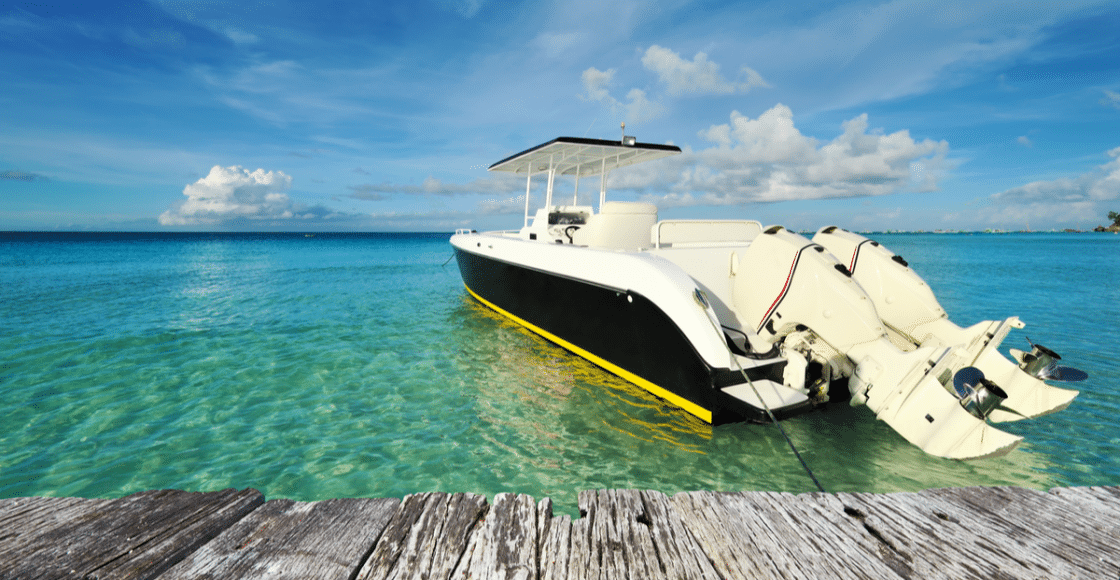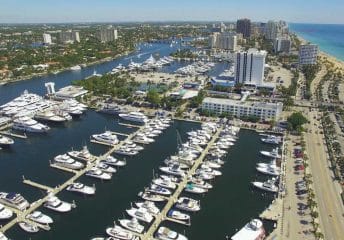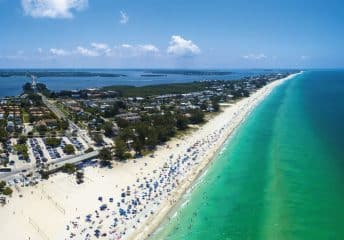Inboard vs. Outboard Motors
Last Updated on June 26, 2024 by Boatsetter Team
Inboard vs outboard motors, which is better? Although a divisive one, this discussion is as important as it is overdue. Boat owners, be they rough and ready fishermen or pleasure sailing dandies, usually fall into two camps: those who sing the praises of inboard motors and those dedicated to all things outboard.
The first thing to notice is that over the last decade (or two), there has been a growing trend of new boats coming equipped with outboard motors. According to survey data by the NADA, the boating industry sold more outboard motor-powered crafts over the last few years than ever before. In fact, more than 165,500 outboard motors were sold in 2016. Some pundits have argued that this is due to consumer preferences, while others have said it is more cost-effective to install for manufacturers.
However, does this mean that this variety of motor trumps the inboard? After all, why would outboard motors become the standard for boating power if they were not the best?
Not so fast.
Every experienced owner of a boat has a preference. This is even more true of manufacturers. Ask anyone in the boating game what type of motor they prefer, and you will get a different answer. You are likely to start up a fierce debate – be warned! Whatever you might have heard at the port, it is vital that before you attempt to choose your ideal style of motor, you must set aside any preconceived notions you may have.
The truth is: neither motor wins outright in the perennial inboard vs. outboard debate. Like your own kids or car collection, each one has its own merits and quirks. Nevertheless, the motors do outclass one another in specific categories and areas. As such, must depends on what you plan to do with your boat and your personal preferences. Freshwater or saltwater? Maneuverability or stability? Speed or stamina? All of these questions, alongside a million more, ought to be considered.
Inboard Motors
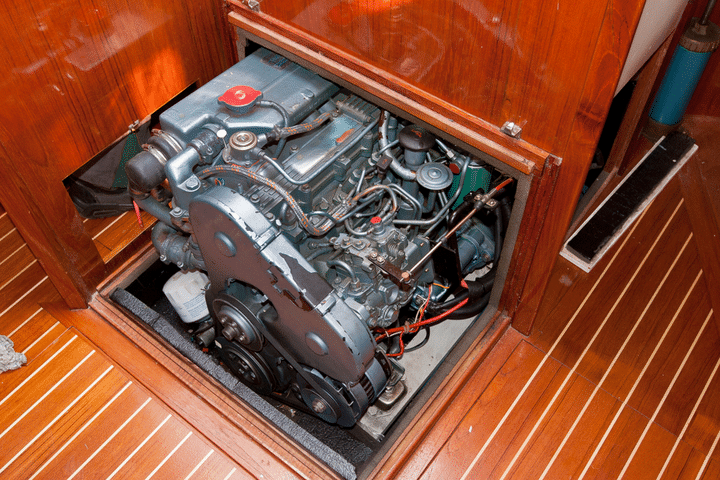
True to its namesake, an inboard motor is fixed inside the boat, typically at the hull. Petrol and gas versions have combustion engines with firing cylinders, whereas electric models differ. Inboard motors are often housed in a large box in the middle of the vessel. This center of gravity is a huge benefit to a drifting experience.
You can spot an inboard at the port by the distinct rudder used to steer the ship. Fishing trawlers on the high seas rely on these of their lower center of gravity. At the same time, slalom skiers enjoy their smaller wake. Larger vessels, like yachts, also use inboard motors but require bigger models, which cannot be placed on the rear of the hull.
Making a judgment on the merits and drawbacks of the inboard is tricky as those who prefer them have their own set of valid reasons. While they need a large box in the middle of the ship to hold the engine – something that can reduce much-needed deck space – they are quieter than their outboard counterparts. This renders them more suitable to the socialites out there who love entertaining. And let us not forget those fishing folks. A quieter boat is less likely to disturb your prey, ensuring a bigger and better catch is had by all.
Albeit ever so slightly more expensive than their outboard counterparts, inboard motors have a penchant for fuel-efficiency. This is because they are modeled on car engines. Moreover, this means that they boast better torque and horsepower for some hair-raising water antics.
A major – and potentially dangerous – downside to the inboard is that it can be a fire hazard. Unfortunately, countless vessels have been damaged and destroyed by fires that began in the inboard motor. Yet fear not. Running a bilge blower can solve that issue.
Check out this post for more tips on how to look after your pride and joy.
Outboard Motors
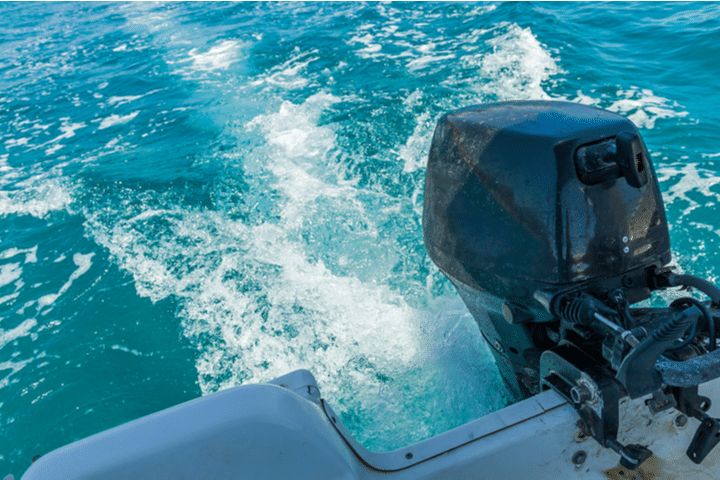
With sales figures as high as those quoted earlier, it is little wonder that the market for outboard motors is huge. No, gigantic. What this means for consumers is that there is ample choice out there. There is an outboard motor to suit any and every function for fishing, recreational boating, or small commercial outfits.
The engine of an outboard is rear mounted on the boat and is commanded by a handle for steering and titling. The propellers can be lifted out of the water completely, which means that transporting and storing them when not in use is a breeze. More so, this feature means that the propellers avoid sitting in the water for prolonged periods, protecting them from erosion and the growth of organic matter. This maximizes durability, of course.
Another notable advantage of the outboard is that its position on the boat makes replacing the motor a simpler process than the inboard. Indeed, replacing an inboard is often an expensive and time-consuming task. This capability means that you can easily upgrade to a new, more powerful motor should you wish to – all without the need for specialist tools or professional expertise. This same simplicity also carries over to repairing and maintaining an outboard. That is if you need to do so. Outboard motors are famous for their dependability.
Yet, outboards are not impervious to faults. A significant drawback of this style of motor is that its power can often leave much to be desired. The bottom line is: outboard motors are insufficient for large vessels. Well, unless you want to spend your life savings on fuel. Finally, outboards take up space. And lots of it. If you wish to entertain on your boat, which is your primary purpose, you might want to consider the inboard. Again, much depends on your needs.
The Hybrid
But before we move on to cost, maintenance, and power comparisons, let us talk hybrids. Oh yes, that is right, here it is, the curveball: the happy medium, the center-ground. Although the hybrid resembles more the outboard with the motor mounted at the rear of the hull, the propeller shaft passes through the boat’s hull. Sharing most of the pros and cons of the outboard, the hybrid also comes with the challenges of the inboard’s positioning.
Cost Comparisons
Of course, the larger the engine, the more expensive it will be to purchase. But you may want to also consider maintenance and replacement costs, along with the life expectancy of the motor design.
For instance, inboard motors typically have a longer life expectancy than outboards. Meanwhile, maintenance requirements, based on hours of use, tend to favor the inboards. To be clear, inboards, on average, can run for near two thousand hours before they might require attention, whereas outboards usually run for around 750 hours before a service is needed.
Yet pay attention: purchasing an inboard motor will be heavier on the purse strings and can entail insurance coverage with more expensive premiums.
Sounds confusing, doesn’t it? Never fear. This boat payment calculator can assist you with the difficulties of working out finances by working out the running costs of your chosen engine. It is where boating veterans of all stripes get their knowledge.
Maintenance Costs
It can be a boring topic. However, you ignore it at your peril: maintenance. As touched upon earlier, outboard motors are used praised for their low, no-nonsense maintenance requirements. Situated at the rear of the hull, their housing protects the inner workings of the motor from the environment.
Hybrids and inboard alike share the same issue: positioning. At the boat’s bilge, steam, damp, and good old H20 can wreak havoc inside the motor when you need to open it for maintenance, potentially causing you a pain in the behind (and wallet). Compounding matters, accessing them is also tricky. This is primarily caused by the petite hatch in their housing, giving you less wriggle room than an outboard.
When you wish to place your boat on land, outboard motors also do not have a drain due to their placement on the boat. This means that excess water can sit around, again creating trouble if you decide to take your boat out of the water. Conversely, inboard varieties avoid this design, which protects them from possible damages caused by moisture.
Power Comparison
POWER. It is a topic you cannot avoid considering. The directional thrust and integral skeg of the outboard mean that a boat equipped with one of these bad boys is nimble on the water, especially at low power and speed. The benefits of this are countless. However, an outboard motor mostly enables you to navigate shallower waters better and park your boat up neatly.
Although there is one thing to bear in mind: despite having a superior power to weight ratio than inboards, outboards lack the total torque to drive big, beefy vessels. However, enthusiasts generally circumvent this issue by adding a second motor. Nowadays, it is not uncommon to see three or four motors adorning their transoms.
Moving on to the inboard, describing them is easy: they are the complete opposite of the outboard in this regard. The fixed position of the propellers under the middle of the boat reduces maneuverability, particularly at lower speeds. This is not to imply the inboard is a slug, however. They are adored by water sports enthusiasts worldwide as they have better wake control, major towing power, and a clear transom for tow ropes. If you are into wakeboarding and water skiing, then an inboard is for you. Besides, a lower center of gravity also helps cut through heavy ocean waves.
So, Which One is Best?
There you have it: a complete guide to outboard vs. inboard motors.
To recap, the advantages of an inboard motor are that they have brilliant fuel efficiency, superior torque and power, and increased life expectancy, and quiet operation. Whereas its downsides are that there is reduced interior space, higher purchasing costs, labor-intensive maintenance, more complex repairs, and full boat winterization is required.
Outboard motors, on the other hand, have a myriad of sought-after traits. Their full portability, easy maintenance, space-saving storage, and simple winterizing procedures, significantly lower price tag, extra interior space, and higher potential top speed. Still, do not forget the challenges. Some of them might break your choice. Most notable of which include low power and torque, which limits their suitability for vessels of certain sizes.
While there are many pros and cons to inboard and outboard motors, it is important to bear in mind that making the right choice is completely up to you and your needs. You may find a better outboard, despite setting out to buy an inboard and vice-versa. The size of your boat, desired maneuverability, boating frequency, local climate, and favorite water activity are essential factors to consider.
Good luck, and remember to do your research. The right decision will enrich your boating experiences to no end and might even prove gentler on the bank balance.

Boatsetter empowers people to explore with confidence by showing them a world of possibility on the water. Rent a boat, list your boat, or become a Boatsetter captain today.
